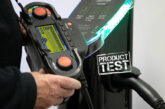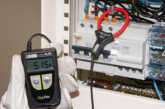
Megger’s Simon Wood explains why the launch of a brand new MFT could spell an end to loop test paranoia.
Loop testing creates more paranoia among electricians and produces more calls to our helpline than any other form of testing. Things, however, are definitely about to change! If you carry out three loop impedance tests on the same circuit and get a different result every time, it’s hard to know which result to record and, in fact, whether it’s possible to be confident about any of the results. Yet inconsistent loop test results are common, as are results that simply look wrong – often, they’re considerably higher than you would have expected.
So why do these problems occur?
In fact, the standard two-wire high-current loop test, which is available on most of today’s testers, gives accurate results that are rarely, if ever, inconsistent. As such, this is the ‘go-to’ test that every electrician should use, when possible. Unfortunately, these tests can only be carried out on circuits that aren’t protected by an RCD or an RCBO.
To get around this, test equipment manufacturers have developed various methods of non-trip loop testing, but these normally have to use very low test currents – low enough to avoid the RCD or RCBO tripping during the test. The voltage changes produced by these low currents, which is what loop testers actually measure, are very small and hard to measure accurately, particularly if there are harmonics – or any noise – present on the circuit.
There’s another common problem, which is often called ‘RCD uplift’ or ‘ghost resistance’. This is where, because of the measurement technique used, the result includes the internal impedance of certain types of RCD and RCBO, and may therefore be far higher than the real loop measurement. It’s easy to see that there are good reasons why loop impedance testing causes more issues for electricians than all of the other tests combined, but what can be done about it?
Key changes
There have been only two key changes in measurement technology for loop impedance testing over the last 30 years. In the early 1990s the first tester to offer non-trip loop testing hit the market. This was the D-lock from Robin, and it was closely followed by numerous other instruments, but these required a three-wire connection. Testers of this type are still common today.
Toward the end of the 1990s, Megger introduced a two-wire tester that didn’t trip the newer electronic RCDs. The technique used in this instrument has undergone three updates over the years and gives users the ability to undertake a test where no neutral is present – something that is obviously not possible with a three-wire test!
Today, there is a third step change that is sure to be recorded prominently in the history of loop testing. Long aware of the limitations of the current loop test methods and that these limitations cause problems for electricians on a daily basis, Megger has introduced its new MFT1741 multifunction tester.
This incorporates an innovative loop test facility that solves all three of the big problems – RCD impedance issues, inconsistent results and the amount of time that non-trip methods take to complete a test.
The new loop test technique for non-trip loop tests all but eliminates the impact of noise and harmonics. Another benefit of this technique is that it completely ignores the internal impedance of the RCD or RCBO protecting the circuit, so high readings due to RCD and RCBO uplift are a thing of the past.
Confidence display
Finally, the technique supports an invaluable new feature – a “confidence” display. This takes the form of an arc that starts off wide but then reduces as the instrument becomes more confident in the accuracy of the result. When the arc reduces to a single point, a high-confidence result is displayed. With the new test method, this can take as little as eight seconds on circuits with little noise present.
Should the meter encounter a high noise circuit, this is indicated by a noise symbol being shown and the confidence arc may also expand mid-test, before finally reducing to a single point. This ensures the user is always aware of what is happening on the circuit during the test.
An additional feature is the ability to carry out loop impedance tests on circuits protected with 10mA RCDs, which are often seen in schools, and other special locations. Again, this is a first for the industry and will allow test and inspection certificates to be fully completed.
For more information about the Megger MFT1741 MFT visit: uk.megger.com








